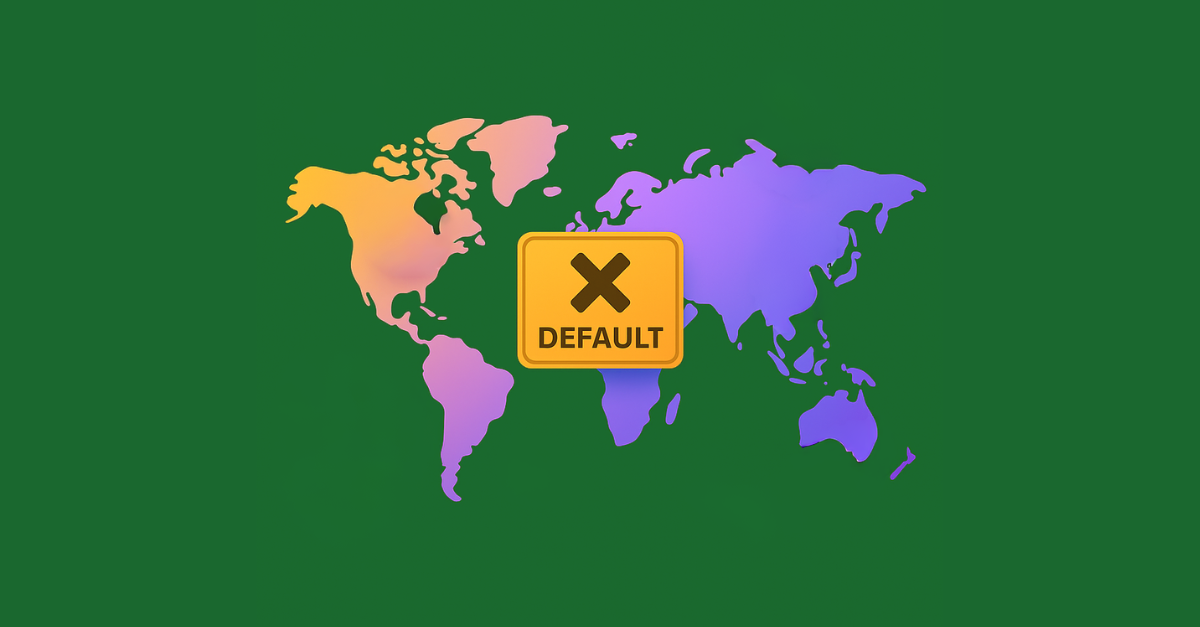Don’t Over-rely on “x-default:” The Best Approach for Your Technical International SEO Strategy
Last month, my colleague Dylan wrote a post about using hreflang tags for international SEO. One item that was mentioned in this article was the x-default tag.
The hreflang x-default tag comes into play when an algorithm cannot match an alternate version of the website to the user’s settings. For this reason, many webmasters treat it as a catch-all, sending users to a generic version of the website in the hopes that the language and currency are understood by those users.
Let’s talk about why creating a unique strategy for each country you want to target is the best path forward for getting x-default right.
Need help with your International SEO? We can help.
Why the x-default “Catch-All” Approach Causes Issues
In the age of VPNs, shared networks, cookies, or simply not speaking the dominant language of the country you are in, this catch-all approach is becoming more likely to lock users into an unusable website experience.
For a better understanding of how to use hreflang tags for international SEO, let’s say a company has the following:
- hreflang=”en-us” (English speakers in the US)
- hreflang=”es-us” (Spanish speakers in the US)
- hreflang=”en-uk” (English speakers in the UK)
- hreflang=”es-sp” (Spanish speakers in Spain)
- hreflang=”de-de” (German speakers in Germany)
There are 58 countries where English is an official language, 20 where Spanish is an official language and 6 where German is an official language. With this code, we have only accommodated one or two of each.
So if we were to use x-default as a “catch-all” here, which version would we point it to? If it is an English version — all German speakers in Austria will be excluded. If it is a Spanish version — all English speakers in Ireland would be excluded.
International Targeting vs. Global: A Real Life Example
If you want to target English-speaking people in the United States, you would have an /en-us/ version of every page. If you are targeting the United Kingdom on top of that, you would create an /en-uk/ version, make some content tweaks like changing “color” to “colour,” but overall, it is a straightforward process.
However, for fully international websites, hreflang can become incredibly complicated. Look at Belgium, for example. Sixty percent of the population speaks Dutch, while 40% speaks French. Therefore, if you wanted to target Belgium, you would need both a /fr-be/ and a /nl-be/ version of the website.
That does not sound so bad, but Belgium is just one example. There are nearly 60 countries that officially recognize two or more national languages. Truly, if you wanted perfect international SEO targeting, you would have 196 versions of your website — one for each country — and then an additional version for each language, specifically optimized with the dialect of that country.
No one does that because it is too much to manage.
Alternative International Targeting Strategies
There are two other important considerations when refining your language strategy using x-default or technical SEO tactics:
1. Using hreflang without country codes
You can use hreflang tags without citing countries (ex. hreflang=“en”). However, since you are no longer specifying a country, you are relying on search engines to select and serve the correct version. Furthermore, you ignore any differences in dialect, which can be a barrier for some users who are familiar with alternative verbiage, measurements, or currency.
2. ccTLDs
The best way to target a country is to use a country code top-level domain (ccTLD) — ie, the domain extension unique to each specific country (ex. yourwebsite.co.uk vs. yourwebsite.de). Google has outright announced it will give these domains preference.
A major downside to this approach, however, is that you are managing multiple domains and, as such, you would then be dividing the authority from your citations between them. Essentially, with this strategy, you are building new properties from scratch.
The Best International SEO Strategy: NOT Being Global
It may be hard to hear, but when clients ask me how to do international SEO so the whole world can find them, I encourage them to reframe their goals. Some executives want to target every living, breathing human, so no sales are excluded. However, if international targeting is done with care and precision (ie, creating directories for specific languages in individual countries) then you can expect far more profitability being selective than you can being inclusive. In many cases, the right solution is to stop thinking globally and really consider where your business can have an impact.

Being a dominant competitor in a few markets is likely to drive more traffic and sales than being a worldwide afterthought. For example, if you sell raw materials to laboratories, there are far more government-funded and high-containment labs in Germany than there are in Austria.
Would you rather position yourself front-and-center for the hundreds of German labs and ignore the handful in Austria, or would you prefer to simply exist and give them an equal, unlikely chance of finding you on their own? You are better off using hreflang=”de-de,” targeting German speakers in Germany — using their dialects — than just trying to target German speakers as a whole.
Strategic International SEO Approaches, Executed By Professionals
Hreflang remains an important part of international SEO. However, the idea that a website can be designed to sell to everybody is fundamentally flawed. Instead, carefully calculate exactly who you are selling to and where they can be found.
You need to develop a strategy for each country you want to target. You cannot put this effort in for select countries and expect x-default to handle the rest.
Greenlane Marketing has a multi-talented SEO team with international targeting experience. If you are looking to improve your organic presence in one of your target countries, or if you are adding a new branch and need innovative international SEO approaches, we can consult with you through the process.







